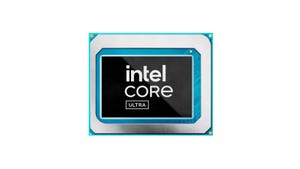Following the business model popularized by Amazon’s Kindle electronic reader, startup Zeebo is a trailblazer in distributing mobile games transparently to end-users via 3G networks.
July 6, 2009
By Tammy Parker
Following the business model popularized by Amazon’s Kindle electronic reader, startup Zeebo is a trailblazer in distributing mobile games transparently to end-users via 3G networks.
The San Diego-based company is a joint venture of Qualcomm and Brazilian digital-gaming company Tectoy. The Zeebo console, which plugs into a TV, runs on a Qualcomm MSM phone chip. All of Zeebo’s games are created for Qualcomm’s BREW platform, which enables Zeebo to use the existing base of BREW developers for content and keeps the price of games low.
Tectoy is distributing the Zeebo gaming console at more than 200 retail locations in Rio de Janeiro and intends to expand distribution across Brazil before bringing the device and associated services to Mexico in the fall. Zeebo’s long-term plan includes launches in other parts of Latin America, India and China.
Zeebo’s founders are Mike Yuen, a manager in Qualcomm’s mobile games division, and Reinaldo Normand of Tectoy. Yuen now serves as a Zeebo board member, and Normand is part of Zeebo’s executive team.
Key to Zeebo’s business plan is the wireless delivery of games without the need for Internet access or a mobile service plan. Like the Amazon Kindle, which downloads reading material via Sprint Nextel’s 1xEV-DO network in the United States, the Zeebo console downloads games over the Claro Brazil HSPA network. In Mexico, Zeebo’s service will work over Telcel’s HSPA network. Both Claro and Telcel are part of the America Movil family.
Zeebo continues the invisible-network concept exploited by Amazon’s Kindle, in that customers have no reason to know that a mobile network is enabling their downloads. They don’t need an individual subscription to the network, and as far as they’re concerned their content is magically downloaded over the air when they want it. The cost of the network service is included in the price of each game, which is about US$10.
Price is set to be a significant selling point for Zeebo. The console is being produced by local manufacturers, keeping the price low by skirting import duties. The console’s launch price in Brazil is US$249, reportedly about a third of what other top gaming consoles sell for new, and the Zeebo console includes three embedded games and the ability for users to download three additional titles at no charge. Further, the console can be bought via installment payments over as much as 20 months.
Another important part of Zeebo’s business plan is the availability of localized content in the appropriate language, so in Brazil all games are available in Portuguese. Although only about 15 game titles are available for download, Zeebo is working on more titles with developers. Just weeks after introducing its console at the Game Developers Conference in March, Zeebo says it received information requests from about 1,000 developers in Brazil and many more in countries around the world.
The big names in gaming that are working with Zeebo include Electronic Arts, THQ, Activision-Blizzard, Namco Networks, Capcom, PopCap, Gameloft and Digital Chocolate, but Zeebo is trying hard to attract small developers that can create culturally relevant games in the local language.
Some have questioned the value to mobile operators of consumer devices that use machine-to-machine communications enabled by 3G networks’ data-delivery capabilities. Amazon’s Kindle reportedly provides ARPU of merely US$2 a month to Sprint Nextel. Operators focused on maintaining ARPU to keep their investors happy might be tempted to shy away from such devices, which would be a shame.
Sprint Nextel noted that the Kindle was responsible for most of the 394,000 new wholesale subscriptions it racked up in 1Q09. Using that number as a calculation base, if an operator indirectly gains 400,000 net e-reader or game-console customers each quarter, each of which contributes monthly ARPU of US$2, that would mean a minimum of US$800,000 per quarter from a new revenue stream. If the majority of net adds were gained early in the quarter, perhaps during a holiday period, the new revenue for a particular quarter might reach US$2.4 million (US$800,000 a month for three months).
I suppose that’s small change for most large operators, but in today’s shaky financial environment every penny counts, and operators would be wise to consider ways to fatten their bank accounts even if that means serving low-ARPU embedded devices, such as the Kindle or Zeebo.
Read more about:
DiscussionYou May Also Like





.png?width=300&auto=webp&quality=80&disable=upscale)

.png?width=300&auto=webp&quality=80&disable=upscale)
_1.jpg?width=300&auto=webp&quality=80&disable=upscale)



.png?width=800&auto=webp&quality=80&disable=upscale)